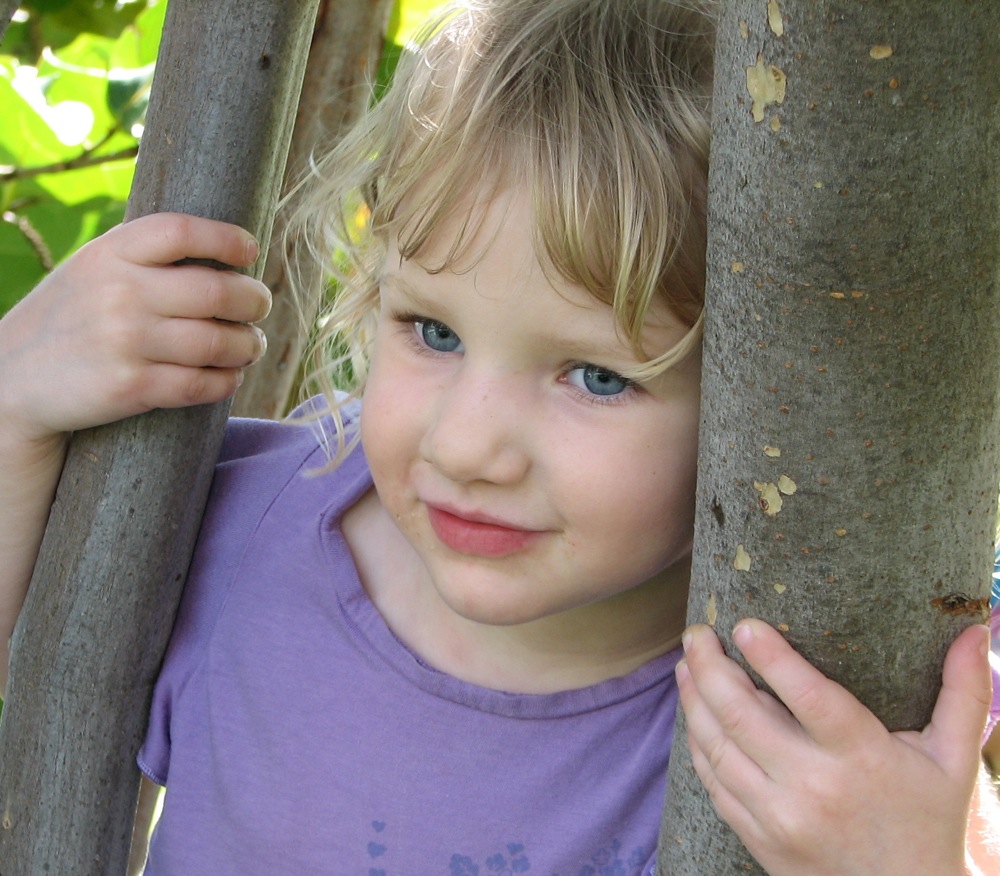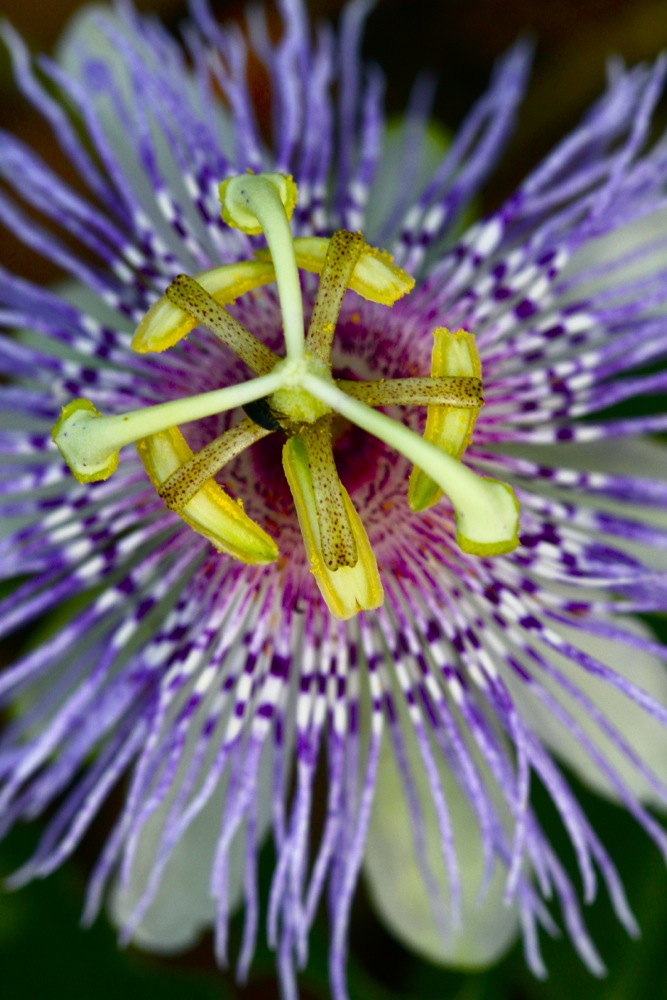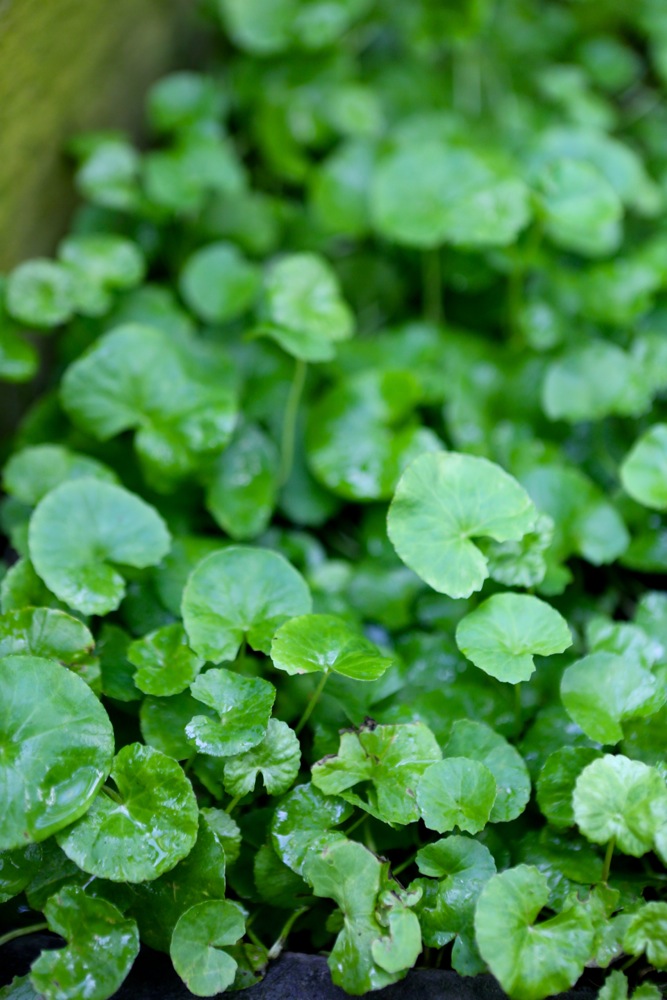Attentive and Calm: Herbs, Food and Lifestyle Therapies for Creating Mental Clarity
Posted on December 06, 2014 0
Attentive and Calm: Herbs, Food and Lifestyle Therapies for Creating Mental Clarity
by Juliet Blankespoor

For many contemporary humans, work and play center on electronic devices and continual communication. With conversations that come in abbreviated snippets, fast-paced scrolling of images, and memes; continual multi-tasking has become the norm. We are energetically in three places at once. No wonder many of us aren’t fully here, and feel challenged staying on task. In addition to a busy lifestyle, stress can put a serious damper on concentration. It’s likely you can recall a time when you were preoccupied with troubles, and you had difficulty following just a simple conversation or completing a project.
Many people’s schedules are so full that they don’t factor in time for cooking wholesome meals, or sitting down with loved ones to savor the deliciousness of life. Hastily eating food that is devoid of nourishment is a commonplace occurrence. How can we expect our brains to function optimally when our bodies are overfed but nutritionally famished, and we don’t have the proper building blocks for healthy tissue function? Finally, many environmental chemicals can affect hormonal systems, including the hormones that regulate physical and mental development. These synthetic compounds — called endocrine disruptors — have the ability to alter hormone production, metabolism and excretion. There are many studies linking exposure to such chemicals with lowered I.Q. levels and difficulty concentrating. One long-term Taiwanese study followed 128 children who were exposed to high levels of Polychlorinated biphenyls (PCBs) and furans (both endocrine disruptors) in the womb. The study found that those who were exposed showed permanent impairment in their motor and mental abilities, as well as behavior problems. Testing found signs of slower development; the children scored, on average, five points lower on IQ tests.1
As children are energetically open beings, they are even more susceptible to distracting forces; they are constantly absorbing information and skills, social clues and mores. Their development depends on their receptivity and assimilation of outside influences. Moreover, children’s mental, emotional and physical growth is mediated by hormones, which can easily be disrupted by the aforementioned endocrine disruptors. Another factor, not to be overlooked, is sugar intake, even in the form of natural sugars found in fruit juice, honey and maple syrup.
Attention Deficit Hyperactivity Disorder (ADHD) is characterized by poor impulse control, hyperactivity and difficulties with focusing. Of course, these are hallmarks of childhood behavior — the relative frequency of these traits is what leads to a diagnosis of this psychiatric disorder. Children who are diagnosed with ADHD often experience difficulty with academics and social relationships. ADHD is often associated with anxiety, sleep disorders, and obsessive-compulsive disorder (OCD). Learning differences are sometimes associated with ADHD.2,3,4
According to the Center for Disease Control (CDC)’s latest statistics, in 2011 over 11% of U.S. school-aged children had received the diagnosis of ADHD by a health care provider.5 The additional statistics, also from the same CDC study, are quite startling, and reveal a strong gender bias in prevalence and/or diagnosis: One in five U.S. high school boys, and one in eleven high school girls had been diagnosed by a health care provider as having ADHD. It is estimated that 6% of school-aged children, ages four to seventeen (approximately 3.5 million children) in the United States are taking medication for ADHD. Stimulants are the most commonly prescribed medications. Stimulants work by increasing dopamine and norepinephrine levels (very similar to adrenaline) in the brain.6 It is my belief that initial approaches to managing ADHD should include diet and lifestyle modifications, herbs and essential oils. These natural therapies need to be thoroughly explored before considering pharmaceutical treatment. Additionally, long-term side effects should be weighed against any short-term benefits of medications.
I am certainly not the first person to broach the issue of our culture’s rigid ideas surrounding appropriate behavior for children. There are many parents and educators who question whether a child should be expected to sit at a desk quietly working on a repetitive task for a long period of time. I would add that we differ constitutionally in our ability to sit and focus — some people need more breaks and movement peppered into their work activities. Additionally, learning differences are difficult to address in a large classroom setting, where the instructor is not able to tailor lessons to each student’s optimal mode of absorbing information.
There are a number of dietary, herbal and lifestyle modifications, which make a big difference in the ability to concentrate, assimilate and retain information. Nutrition, proper sleep, exercise, and training the mind to focus are central to nurturing attentiveness. Herbs and essential oils are also helpful, but it is important to not miss any underlying factors contributing to difficulties with learning and focusing.
I have included strategies for children with ADHD; these same strategies are used for adults with similar challenges. The following information is applicable to all people concerned with the ability to learn, focus, and retain information. These basic lifestyle, herbal, and nutritional recommendations should benefit college students, elders experiencing memory loss, and anyone who feels s/he suffer from “foggy thinking.”
Dietary and Lifestyle Strategies for Assisting Focus:
• After teaching hundreds of herbal students over the past few decades, I have noticed a direct relationship between the students with a regular yoga or meditation practice and the ability to concentrate during lengthy lectures. Focus is a skill we can all develop with regular practice. Restorative yoga, with an emphasis on breath work and cultivating presence, works well for many people. Even ten minutes of daily focus on inhalation and exhalation can make a big difference. Audio recordings of guided meditations can do much to help maintain focus during meditation and relaxation. Also, there are many books, videos and classes tailored specifically for children on yoga, relaxation and meditation. Another helpful hint: schedule these yoga or meditation sessions into the calendar at a specific time, and they will be more likely to actually happen.
• The rhythm of a daily routine is very pacifying to people who are easily distracted or overly sensitive to stimuli. Ritual creates a form or vessel for energy, and can help to calm over-excitement. Some examples include: meals, waking and retiring at the same time each day. Children respond well to structure at school – knowing the schedule helps them settle into activities, and gives them an idea of what to expect during the day. It is also possible to create reassuring routines at home. However, structure must be balanced with free time — for play and creativity. If possible, aim to be “unplugged” and in nature on a regular basis. Even a park in an urban environment is replenishing to the spirit.
• Avoid the ingestion of endocrine disruptors, which are commonly found in: plastic food and beverage containers, and conventionally grown meat, dairy and produce. Other sources include the chemicals found in dry-cleaning solvents, synthetic housecleaning solutions and body care products. Fire-retardant pajamas, plastic teething toys and bottles are common sources of exposure to endocrine disruptors for infants. Bisphenol A (BPA)-free plastic is simply replaced with a closely related compound, Bisphenol B (BPB), which appears to be equally toxic.
• Diet should focus on organically grown whole foods: unprocessed vegetables, fruits, beans, whole grains and pasture-raised meat and dairy. Zinc deficiency has been linked to ADHD.7 Good dietary sources of zinc include: oysters, red meat, poultry, cashews, sesame and pumpkin seeds, lentils, garbanzo beans and quinoa. Good quality fats are paramount to healthy nerve and cell membrane functioning. Docosahexaenoic acid (DHA) and eicosapentaenoic acid (EPA) are essential fatty acids that are found in brain and peripheral neurons. Deficiency of these healthy lipids is associated with many emotional, behavioral and cognitive disorders.7 Essential fatty acids are found in grass-fed or pastured meat, poultry, eggs and dairy. Cold-water fish is another reliable source, but it is important to only consume fish that is low in heavy metals and other toxins. Additionally, overfishing is another concern when choosing healthy fish sources. Wild salmon, trout, anchovies and sardines are some good choices. It may be necessary to supplement your diet with high quality fish oil if finances or dietary preferences are an issue.
• Anyone observant, who has spent time with children, has probably noticed how sugar and caffeine can lead to hyperactivity and a subsequent “sugar crash.” Several studies have shown there is no correlation between sugar intake and ADHD symptoms; however, the “control” group used in these studies was given synthetic sweeteners, such as aspartame,which could have a similar affect on the brain as sugar by altering neurotransmitter metabolism, such as dopamine, via chemical reward circuits.8 Sometimes common sense and personal experience prove to be more enlightening than science. Given sugar’s additional role in developing diabetes, obesity, and dental carries, it is prudent to limit the intake of sugar, including natural sweeteners such as honey, maple syrup and fruit juices. Avoid high fructose corn syrup sweetener entirely. Artificial food coloring and preservatives have also been associated with ADHD, and should be avoided.9
• Limit or exclude the use of electronic devices. According to the most recent guidelines of the American Academy of Pediatrics, children, aged six years old and up, should limit their daily entertainment screen time to two hours a day.10 For many children, even this may be too much media time.
• Have you ever noticed a distinct feeling of calm, coupled with clarity, after a burst of physical exertion? If you are a parent you have no doubt noted how exercise can calm a wound-up child, allowing them to relax and focus. Regular movement, especially with a raised heart rate, is one of the most effective lifestyle ingredients for focus and peace. Obviously, approach intense exercise with caution if you are unaccustomed to it or have a serious health condition.
• Proper sleep is essential to mental alertness, clarity and effective decision-making. It is important to note that the quality of sleep, including dreamtime, is just as important as the duration. Creating nightly rituals is simple and effective — try baths, sleepy tea, or something as simple as placing a few drops of lavender (Lavandula angustifolia) essential oil on the pillow before slumber. Chamomile (Matricaria recutita), lemon balm (Melissa officinalis), catnip (Nepeta cataria), passionflower (Passiflora incarnata) and skullcap (Scutellaria lateriflora) are safe to use for children. The preceding list of herbs is in order of their sleep-inducing strength, from mildest to strongest. For adults, valerian (Valeriana officinalis) and hops (Humulus lupulus) may be needed if the milder hypnotics don’t do the trick.
Herbs for Assisting Focus, Learning and Memory:

Passionflower (Passiflora incarnata) is helpful in managing anxiety and hyperactivity in children, as well as in adults. Passionflower is also combined with milky oats (Avena sativa) and skullcap (Scutellaria lateriflora) to nurture peaceful and calm states. When supporting focus and learning it is ideal to add one or more of the herbs listed below, which aid in concentration and memory. The leaves and flowers of passionflower are the medicinal portion — it can be taken daily as a tea, tincture or capsule. For a 150-pound adult the tincture dosage is two to three droppers full three times a day; the tea dosage is three cups a day; follow dosage instructions on the label for capsules.
 Gotu Kola (Centella asiatica) is a traditional Ayurvedic and Southeastern Asian remedy used to aid concentration and learning. It has a rich tradition of use, dating back thousands of years, and is enjoyed throughout the world as a medicinal salad green or an herbal addition to smoothies. Gotu kola is an adaptogen, meaning it helps the body adapt to physical and emotional stress. It is considered a rejuvenative in Ayurvedic medicine; imparting a sense of calm and supporting the higher emotions, such as compassion and kindness. Gotu kola is a creeping ground cover in the carrot family; its leaves have a pleasant parsley-like flavor. It can be used in tea, powder, capsule or tincture form. For a 150-pound adult the tincture dosage is one to two droppers full three times a day; the tea dosage is three cups a day; follow instructions on the label for capsules.
Gotu Kola (Centella asiatica) is a traditional Ayurvedic and Southeastern Asian remedy used to aid concentration and learning. It has a rich tradition of use, dating back thousands of years, and is enjoyed throughout the world as a medicinal salad green or an herbal addition to smoothies. Gotu kola is an adaptogen, meaning it helps the body adapt to physical and emotional stress. It is considered a rejuvenative in Ayurvedic medicine; imparting a sense of calm and supporting the higher emotions, such as compassion and kindness. Gotu kola is a creeping ground cover in the carrot family; its leaves have a pleasant parsley-like flavor. It can be used in tea, powder, capsule or tincture form. For a 150-pound adult the tincture dosage is one to two droppers full three times a day; the tea dosage is three cups a day; follow instructions on the label for capsules.
Schisandra (Schisandra chinensis) is a medicinal berry that grows on a vine that is native to China. It is an adaptogen, and used herbally to treat anxiety and restlessness. Schisandra supports the seemingly opposing qualities of alertness and relaxation. The fruit has a sour zingy flavor that many children enjoy. Schisandra powder can be added to homemade goo balls, which are basically dried fruit and nut balls. There are endless variations when creating goo balls. Try toasted coconut (Cocos nucifera) flakes, chopped pumpkin (Cucurbita maxima) and sunflower (Helianthus annuus) seeds with dried apricots (Prunus armenicaca), raisins (Vitis vinifera), or cranberries (Vaccinium macrocarpon). I like to use nut butter — almond (Prunus dulcis), sunflower (Helianthus annuus) or peanut (Arachis hypogaea) — as a binder.
For children who are used to eating ample sweets, try tapering down their sugar intake with lightly sweetened goo balls —brown rice (Oryza sativa) syrup is a healthy choice. After they become accustomed to lower sugar intake, you can omit this ingredient, and let the dried fruit serve as the sole sweetener. If you have a food processor, you can whip up a batch quickly. Otherwise chop and mix by hand. You can refrigerate a few weeks worth at a time. Gotu kola and passionflower leaf powder are also tasty, and can be added to the balls in equal parts. Try adding one teaspoon of herb or herb mixture to each ping pong-sized goo ball — the dosage for a child would be one ball a day; adults can eat two or three balls a day. Schisandra can also be enjoyed as a tea or tincture. For a 150-pound adult the tincture dosage is two to three droppers full; the tea dosage is three cups a day.
Determining Dosage in Children by Weight:
To determine the child’s dosage by weight, you can assume that the adult dosage is for a 150-pound adult. Divide the child’s weight by 150. Take that number and multiply it by the recommended adult dosage. For example, if your child weighs 50 pounds, she will need one-third the recommended dose for a 150-pound adult. If the adult dosage is three droppers full of a tincture, she will need one third of that dose, which is one dropper full (1/3 of 3 droppers full). A 25-pound child would need one-sixth the adult dose, so he would receive one half of a dropper full (1/6 of 3 droppers full).
References:
1. Y. Guo, G. Lambert, and C.-C. Hsu; “Growth and Abnormalities in the Population Exposed to PCBs and Dibenzofurnas;” Presented at Children’s Environmental Health Network Conference; 1994.
2. National Center for Learning Disabilities; http://www.ncld.org/component/com_rssearch/?option=com_rssearch&search=ADHD&view=results&layout=default&module_id=1393&Itemid=2053. Accessed July 27, 2014.
3. Centers for Disease Control and Prevention. Attention-Deficit/Hyperactive Disorder. http://www.cdc.gov/ncbddd/adhd/facts.html. Accessed July 27, 2014.
4. National Institute of Mental Health. Attention Deficit Hyperactivity Disorder. http://www.nimh.nih.gov/health/publications/attention-deficit-hyperactivity-disorder/index.shtml#pub8. Accessed July 27, 2014.
5. Centers for Disease Control and Prevention. Attention-Deficit/Hyperactivity Disorder—Data and Statistics. http://www.cdc.gov/ncbddd/adhd/data.html Accessed July 27, 2014.
6. Centers for Disease Control and Prevention. Attention-Deficit/ Hyperactivity Disorder—Treatment. http://www.cdc.gov/ncbddd/adhd/treatment.html Accessed July 27, 2014.
7. Pizzorno, Joseph & Murray, Michael; The Clinician’s Handbook to Natural Medicine, 2nd edition; 2007.
8. Johnson, R. J. and Gold, MS, Johnson DR; Attention-Deficit/Hyperactivity Disorder: Is it time to reappraise the role of sugar consumption; 2011; Retrieved from: http://www.ncbi.nlm.nih.gov/pubmed/21904085. Accessed July 27, 2014.
9. Stevens, L.J.; et al.; Dietary Sensitivities and ADHD: thirty-five years of research; Clinical Pediatrics; April 279-93; 2011; Retrieved from: http://www.ncbi.nlm.nih.gov/pubmed/21127082. Accessed July 27, 2014.
10. American Academy of Pediatrics; Media and Children; http://www.aap.org/en-us/advocacy-and-policy/aap-health-initiatives/Pages/Media-and-Children.aspx Retrieved July 27, 2014.
 About Juliet Blankespoor
About Juliet Blankespoor
Juliet Blankespoor is the director and primary instructor at the Chestnut School of Herbal Medicine,, where she teaches the traditional art of bioregional community herbalism. In addition, she cultivates a diverse herb garden and apothecary. Juliet also shares her plant obsession, through her herbal articles and botanical photography, in her Blog Castanea. She is currently developing several distance-learning herbal programs, including medicine making and medicinal herb cultivation, which will be available in late 2014. You can contact Juliet at Juliet@chestnutherbs.com.
Comments
No comments yet for this entry.
Please Log In to post comments